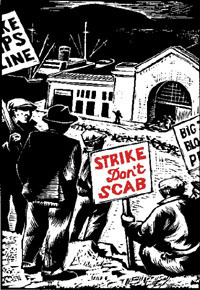|
|
|
|
|
|
FTA ‘safety blitz’ uncovers more problems with DC Metro safety
FTA ‘safety blitz’ uncovers more problems with DC Metro safety
"Metro’s workers are placing themselves at risk, too, inspectors said. Many are failing to follow procedures established as part of a highly touted safety program designed to keep them safe."
https://www.washingtonpost.com/local/trafficandcommuting/fta-safety-blit...
A train on March 30 arrives at the Metro Center station in Washington. Inspectors have found 229 defects in two areas of track between the Huntington and Metro Center stations. (Michael Robinson Chavez/The Washington Post)
By Lori Aratani April 18
Federal safety inspections of Metro’s rail system have found that the transit agency is failing to provide basic safety protections — including working fire extinguishers and clear escape routes — to help its riders in the event of an emergency evacuation.
Metro’s workers are placing themselves at risk, too, inspectors said. Many are failing to follow procedures established as part of a highly touted safety program designed to keep them safe.
The concerns, outlined in a letter from the Federal Transit Administration to Metro General Manager Paul Wiedefeld and obtained by The Washington Post, are of such importance that FTA officials said immediate action is required.
“Although we are still compiling our final report from these inspections, the seriousness of these findings and a clear concern for public safety compel me to direct WMATA to take immediate action,” wrote Thomas Littleton, the FTA’s associate administrator for safety.
FTA inspectors found the problems during the agency’s recent “safety blitz,” which began in March and is ongoing.
[FTA launches safety blitz of Metro’s rail operations]
The defects aren’t complex in nature — rather, they involve basic safety practices designed to protect riders in an emergency. But they again raise questions about how seriously Metro is taking its pledge to fix myriad safety issues that have plagued its troubled rail system.
The new list of safety shortcomings comes just over a month after officials shut down the entire system for emergency inspection of power cables that officials feared could endanger the lives of thousands of riders.
Inspectors found emergency walkways blocked by construction debris and other materials; nonworking or expired fire extinguishers; out-of-order emergency traction power shut-off switches, which are used to cut third-rail power during an emergency; and “filth-covered emergency and safety signage.”
“In combination with one another, these defects create a systematic safety condition that significantly limits WMATA’s ability to manage a fire or smoke emergency in the tunnel,” Littleton wrote.
Metro spokeswoman Sherri Ly said via email that the agency has been briefed by FTA officials and that “all safety critical items are receiving priority attention.”
Rep. Gerald E. Connolly (D-Va.), a strong supporter and vocal critic of the Metro system, called the findings of the safety blitz “jaw-dropping.”
“This just underscores the institutional challenges Metro’s new chief safety officer will have to tackle when he begins next month,” Connolly said.
Added Rep. Barbara Comstock (R-Va.): “While we all acknowledge that this system cannot be fixed overnight by new General Manager Paul Wiedefeld, it is clear that common safety procedures have gone ignored for far too long. This is simply more evidence that Metro needs a culture change and a top-to-bottom restructuring so that it can provide safe and efficient service.”
[Florida congressman labels Metro a ‘screwed-up mess’]
FTA inspectors said that during their walk-throughs with Metro personnel, they also observed “numerous violations of WMATA’s roadway worker program (RWP) rules and procedures.”
Metro’s roadway worker protection program was created after the deaths of several track workers. It has been touted as a national model for keeping transit employees safe. But FTA inspectors found that Metro’s employees weren’t following basic procedures.
Those included instances in which train operators were not following speed restrictions as they approached work crews and numerous incidents in which workers consistently violated the “15-second ample time rule” designed to protect them from being hit by a train. Instead, they often clear the tracks with five or fewer seconds to spare, the inspectors found.
Concerns about worker safety are so grave that Littleton said Metro must conduct safety briefings for workers and “confirm with FTA no later than Friday, April 22, 2016, the substance and date of completion of the requisite briefings.”
Ly, the Metro spokeswoman, said the briefings will be done this week.
Sign up
She added that other issues raised by Littleton’s letter — particularly those that require access to Metrorail tracks — will be incorporated into the comprehensive “track plan” that Wiedefeld is developing and that is expected to be released in the next few weeks.
“The plan will lay out the work being performed, set clear timetables for completion and provide customers with the advance information they need to prepare for impacts to service,” Ly wrote in an email.
Since October, the FTA has been responsible for safety oversight of Metro’s rail system. It is a temporary arrangement, but one that gives the agency the authority to conduct surprise inspections.
Officials have conducted 107 inspections focused on a variety of operations, including tracks, traction power and the rail operation control center, which manages trains as they move through the system.
As part of that work, inspectors have found 229 defects, including issues with track gauge — the distance between rails — in two areas of track between the Huntington and Metro Center stations. Wide gauge is significant because it can cause derailments.
-

- Log in to post comments
- Printer-friendly version



